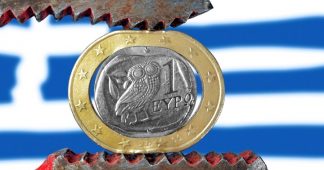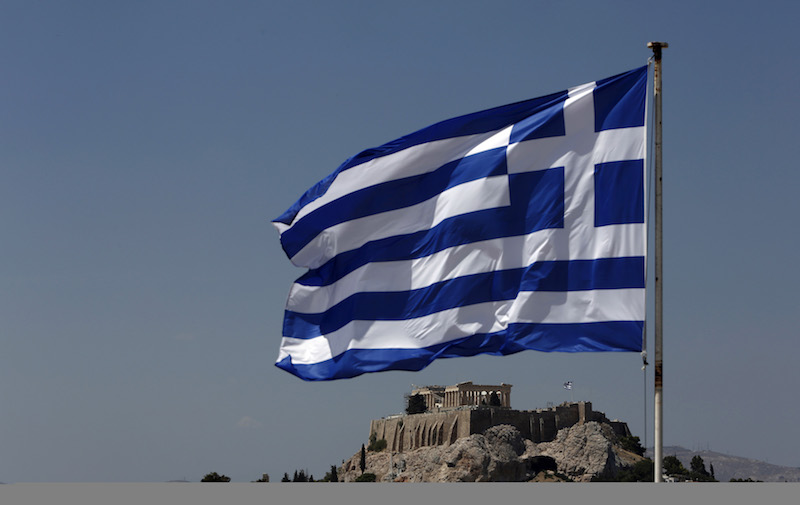You can’t really understand the world, especially global North-South relationships, without understanding how foreign aid works. The Debt System will help you do that. The book argues for the necessity of a radical restructuring of global finance.
by Michael McCallister
21 March 2020
Eric Toussaint is spokesperson of the Committee for the Abolition of Illegitimate Debts (CADTM), based in Belgium. The committee’s website (www.cadtm.org) provides a compendium of important information about the debt problem. Toussaint’s previous book was Bankocracy (Resistance Books, 2015).
In this work, Toussaint aims to explain the history of international development loans between the imperialist countries of the global North and the (neo)colonies to the South. Over the first seven chapters Toussaint outlines instance after instance “from Latin America to China, Greece, Tunisia, Egypt, and the Ottoman Empire [where] the ruling classes in the global North have used debt as a means of accumulating wealth and as a weaon of domination.” In short, you understand the imperial power always profits from a loan to a colony.
Toussaint tells some colorful stories from the records with a familiar pattern. The colonial collaboration regime runs to the European power with a plea for a loan to make war on a regional rival, or simply to keep the government running. European bankers come to the rescue, but at an interest rate that the colony can never afford. But hey, there’s more money to borrow where that came from.
The cycle keeps repeating. That is, unless/until the debt is repudiated — which is the second theme of this book.
Consider Emile Erlanger. Toussaint describes him as “one of the most prominent bankers in the financial centers of Paris and London in the second half of the 19th century.” He shows up in 1863 with a pile of money for the bey (king) of Tunis, to help the bey pay for consular buildings for France and Britain, not to mention the French rifles he needed to replace a batch of useless weapons from Belgium.
“Genuine Swindle”
Erlanger sold Tunisian bonds worth 500 French francs for a bargain rate of 480 francs, with annual interest of 35 francs for 15 years. In turn, the Tunisian government received 415 francs for each 500-franc bond sold, and had to repay the investors 1025 francs for the same bond.
Meanwhile Erlanger pocketed a little over five million francs in commissions. Ten years later, a French treasury inspector described this loan as “a genuine swindle.”
The bey and his prime minister were paid in cash, and deposited the funds in a special account, which never found its way into the government treasury. Presumably, the bey and his ministers pocketed all the money.
Meanwhile, the various creditors pressured the bey for repayment. No worries — the bey doubled the annual tax on each person in Tunis! This “caused a general rebellion in the country.” It took the bey almost a year to quell the uprising.
Erlanger came to the rescue a second time, offering 36.87 million French francs. Tunisia only saw 20 million of that, but had to repay 75.4 million francs!
The cycle continued, until the French invaded Tunisia in 1881 to enforce debt collection.
A different set of events following the same general pattern led to the military occupation of Egypt by the British in 1882.
Debt Crises Then and Now
The book lives in the shadow of the Greek debt crisis in the last decade, and Toussaint reminds us that “The lives of Greeks have been blighted by major debt crises no less than four times since 1826.” (59)
The first, in 1830, resulted in the Hellenic Republic overthrown in favor of a monarchy at the behest of a troika of the British, French and Russian monarchies.
When even the Greek king could no longer find the money in the treasury to service the debt, he suspended payments in 1843. Despite a series of popular rebellions, the troika attempted to impose another debt plan requiring massive public sector layoffs (including all but 26 university professors), wage cuts, and canceled public works programs.
When even those efforts failed to get the sufficient revenue for the troika, the British and French navies seized the port of Piraeus in 1854, and collected all the customs revenue for two years. Yet again, the troika insisted that the original loan from 1824-5 had not been paid in full.
The Greek debt was restructured yet again in 1878. Noting that Greek budgets delivered a surplus every year but two in the period 1837-1877 before the debt service was paid, Toussaint concludes that “Once debt repayment enters the picture, it becomes clear that it (debt service) was the sole cause of the unsustainable debt burden.”
Toussaint reviews several Latin American debt crises in the 19th and early 20th centuries. Even the continent’s “liberator” Simon Bolivar was forced into agreeing to borrow from the former colonial powers in the 1820s.
Toussaint includes a useful chronology as an appendix, offering brief descriptions of debt crises. These include several not touched on in the main text, from 1815-1992.
Successful Debt Repudiation
Sometimes the debtor countries manage to win small victories against crushing debt. Toussaint explains in great detail how 20th century revolutionaries in Mexico and Russia successfully repudiated debts incurred by their respective ancien regimes.
Toussaint describes the aftermath of the 1910 revolution in Mexico, leading to the establishment of what would become known as the Institutional Revolutionary Party (PRI) that dominated Mexican politics for a century. In February 1919, a cartel of bankers from the creditor nations formed to bring Mexico to the bargaining table to resolve its debts.
Three years later, Mexican president Alvaro Obregon acknowledged a public debt of $500 million. Toussaint contends that figure was twice what was actually owed ($220 million from the previous dictatorship of Porfirio Diaz, plus another $30 million from 1910-1922). “On top of that,” Toussaint writes, “he agreed to add $200 million as default interest.”
Mexico began repaying on this doubled debt, but suspended debt payments on June 30, 1924 after the budget deficit got too deep. After several cycles of resuming and suspending payments, the Mexican Congress canceled the most recent agreement between the government and the bankers in January 1932, at the height of the global Depression.
In 1941, just before U.S. entry into World War Two, President Franklin Roosevelt insisted that the bankers’ cartel give up trying to enforce debt payments from Mexico and Brazil. The cartel reduced the $510 million bill it was trying to steal from Mexico, and agreed to accept just $50 million (capital and interest).
The post-revolutionary debt situation in Russia was more complicated, but settled in an equally decisive manner. The Soviet government suspended payment of all international debt just months after the October Revolution of 1917, and all czarist debts were repudiated in February 1918. [Eric Toussaint describes the subsequent struggle in detail in ATC 195, “The Soviets and Tsarist Debt,” online at https://solidarity-us.org/atc/195 — ed.]
Soviet debt repudiation was one reason for 13 countries invading Russia to support the counterrevolutionary White forces in the civil war that followed the revolution of 1917. In April 1922 Great Britain, France, Belgium, Japan and Italy hosted a conference to force the Russians to again acknowledge the repudiated debt and stop demanding global revolution.
“The Western capitals believed that Soviet government to be on its knees and were convinced they would get what they wanted by making the new loans and investments Russia needed conditional upon the acknowledgment of previous debts and compensation for expropriated Western companies.” (194)
The Bolshevik government proposed to resume partial payment of the Tsarist debt if three conditions were met by Western powers. (195) These were:
- Diplomatic recognition of the Soviet government
- Bilateral loans
- Encouragement of private firms that were demanding payment for expropriation to accept concessions to exploit natural resources in Siberia and other locations as compensation.
Five weeks after the start of these negotiations, Russia dropped out, with foreign minister George Chicherin declaring that “Governments and administrations created by revolutions are not bound to respect the obligations of the governments which have been overthrown.” (203)
Aside from a brief reference to Argentina’s debt suspension from late 2001 to March 2005, The Debt System does not discuss today’s international debt. Readers interested in current topics should closely follow the CADTM website.
Theories of Odious Debt
Chicherin’s declaration is an excellent summary of the theory of “odious debt.” Toussaint turns more theoretical in Chapter 8, where he describes the theory of “odious debt” that Chicherin summarizes so well. The phrase comes up frequently in the preceding historical chapters, but he offers a more thorough explanation of the concept here and in the following chapter.
Alexander Nahum Sack is considered to be the originator of this concept, which suggests that in exceptional cases, debts may be written off by new regimes: Sack wrote:
“If a despotic power contracts debt, not for the needs and interest of the state, but to strengthen its despotic regime, to oppress the population that combats it, that debt is odious for the whole state. The debt need not be recognized by the Nation: It is a debt of the regime, a personal debt of the power that contracted it and consequently falls along with the power that contracted it.” Les Effets des Transformation des Etats sur leurs dettes publiques et autres obligations financières: traité juridique et financier, Recueil Sirey, Paris, 1927, 157, quoted in Toussaint, 131
Since 2008 CADTM has campaigned for “a new doctrine of illegitimate, illegal, odious, and unsustainable debt” cancellation. This doctrine includes considerations of whether the debtor state is democratic, whether it respects human rights, whether the debt is incurred within the framework of “structural adjustments” (enforced austerity), and includes all debts incurred to pay back previous odious debts.
On grounds of global social justice, The Debt System makes a strong case for this new doctrine.
(Source: Europe Solidaire Sans Frontières http://www.europe-solidaire.org/)
Published at http://cadtm.org/Escaping-the-Debt-Trap











